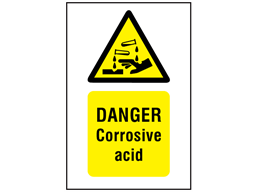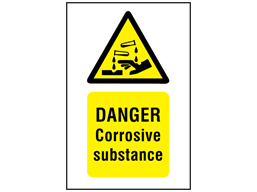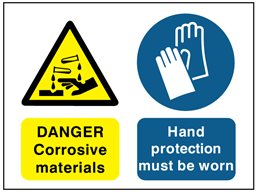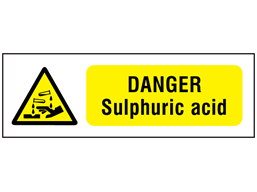
Working with corrosive substances can be a particularly tricky business, especially due to the fact that they have the ability to attack and destroy exposed body tissues. This damage can begin as soon as an individual comes into contact with the chemical in question, which means that every possible precaution should be taken in order to ensure that this does not occur. That's why corrosive warning labels are so important. Below are reasons why corrosive substances are hazardous and what corrosive warning signs can help communicate this danger.
Areas That can be Damaged by Corrosive Substances Include:
- Skin - Corrosives have the ability to cause severe irritation to the skin, and worse, can even cause blisters and burns. In the most serious cases, this can also lead to death.
- Eyes - The severity of eye injuries can range from severe irritation to permanent blindness, depending on the strength of the chemical, and how it comes into contact with the eyes.
- Internal Organs - Corrosives are also highly dangerous when inhaled or swallowed, and can cause serious illnesses as a result. In cases where the particles have been inhaled, this impacts the lining of the nose, windpipe and lungs. Swallowing these substances can cause damage to your mouth, throat and digestive tract.
This can Also Impact Equipment and Installations:
Corrosives also have the ability to corrode metals, plastics and wood, which can lead to a variety of further issues:
- Damage to work equipment, components, materials and more.
- The production of hydrogen gas on contact, which can lead to an explosion if there is an ignition source.
- Contamination of fluids in pipes/vessels.
In order to prevent these issues, a number of precautions should be taken, which is why we supply several corrosive warning signs. Including:
Ensure Safe and Efficient Storage

(Corrosive Substance Sign)
Use the Correct PPE

(Hand Protection Sign)
Tailor Your Treatment/Actions to the Substance in Question

(Sulphuric Acid Sign)
To see our full selection of corrosive warning signs, visit our Chemical Hazards Warning Sign category!